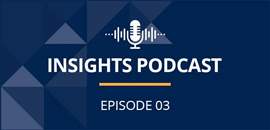Financial markets had already turned volatile this year as investors have been reassessing the prospects for higher inflation and tightening by the Federal Reserve. Now, the impacts of Russia’s invasion of Ukraine and the response it could elicit from the United States and NATO has added to uncertainty, along with a major selloff in global equity markets.
While no one can be sure how events will unfold, history suggests that whenever there is geopolitical conflict, financial markets have reacted the most when energy prices spike and the Fed tightens monetary policy.
This lesson was learned during the first two oil shocks. The first spike occurred in 1973, when OPEC imposed an oil embargo against the United States in retaliation for the U.S. supplying weapons to Israel during the Arab-Israeli conflict. The second spike began in early 1979, when the Shah of Iran was overthrown and Iran’s oil production plunged from 5.2 million barrels per day (mbd) to only 1.4 mbd in 1980, effectively removing 6 percent of world production.
In both instances, oil prices quadrupled and the Federal Reserve raised interest rates aggressively to counter the impact of higher inflation. This resulted in large increases in bond yields and stock market sell-offs that accompanied severe recessions in 1973-74 and 1982-83.
By comparison, subsequent oil price hikes in 1990 and 2003 linked to conflicts between the U.S. and Iraq had less powerful effects on the economy and markets.
One reason is that the shortfall in oil supplies was not as great as the first two shocks, and price increases were smaller in percentage terms. Also, the Federal Reserve refrained from tightening monetary policy on both occasions because inflation was under control. In this context, the Fed viewed higher oil prices as a tax on households and businesses that would weaken the economy.
Weighing these considerations, the key issues for investors today are: (1) How may the invasion of Ukraine by Russia impact energy markets? And (2) How would the outcome affect U.S. monetary policy?
Regarding the first issue, an ameliorating factor for the United States is that it has become self-sufficient in energy over the past decade. This reflects both energy conservation on the demand side and development of shale oil production on the supply side. While the oil imports from Russia reached 10 percent of total U.S. oil imports in 2021, it occurred as the U.S. boycotted oil from Venezuela.
By comparison, Europe is likely to be impacted to a greater extent because it is heavily dependent on Russia for natural gas. Russia is the second largest producer of natural gas globally, accounting for nearly 17 percent of supply in 2020. It exports more than 35 percent of its production and about 70 percent is sent to Europe by pipeline, with much of it passing through Ukraine via three major arteries. The largest is Nord Stream 1, with 55 billion cubic meters per annum of capacity.
Following Russia’s invasion of Ukraine, Germany canceled plans for the Nord Stream 2 gas pipeline, which was supposed to transfer natural gas from Russia to Germany. However, Russia also supplies more than one half of German imports of coal, and the impacts on this are not yet clear.
Nonetheless, investors need to consider what impact a disruption in Russian pipeline exports would have on oil prices. They currently are hovering around $100 per barrel for West Texas Intermediate, up from about $70 at the beginning of this year.
According to J.P. Morgan, a supply disruption could elicit a price rally in European natural gas prices similar to what occurred in late December. This would also impact the price of oil, as countries would likely switch away from natural gas: “Any disruptions to oil flows from Russia in a context of low spare capacity in other regions could easily send oil prices to $120 bbl. A halving of Russian oil exports would likely push the Brent oil price to $150 bbl.”
If so, the magnitude of energy price increases envisioned would be more in line with the two U.S. conflicts with Iraq rather than the first two oil shocks. One caveat is that Russia would be a more formidable advisory than Iraq. Another is that a decision by the U.S. government to use the Foreign Direct Product Rule to restrict companies from shipping technology products to Russia could escalate the crisis.
The challenge for the Fed is that higher energy prices would further elevate U.S. consumer price inflation, which currently is at a four-decade high of 7.5 percent. Investors now recognize that the Fed is behind the curve, and they have upped their expectations for Fed tightening noticeably.
At the beginning of this year, for example, the bond market was pricing in a 25 basis point rate hike in June, followed by two more quarter-point hikes in the second half of this year. Now, bond investors are pricing in rate hikes beginning in March, and that it could raise rates by 150-175 basis points this year.
I do not believe the Fed would alter policy if oil prices spiked, as it would consider the price hikes to be an exogenous event that would have a dampening effect on the economy. Also, higher energy prices would tighten financial market conditions if both the bond market and stock market sold off.
By the same token, the Fed would have little room to maneuver to hold off rate hikes that are already in train, considering interest rates are at near record lows and negative after adjusting for inflation. In these circumstances, the most likely outcome would be stagflation in which economic growth moderates, inflation stays elevated, and financial markets underperform.
A version of this article was posted to TheHill.com on February 15, 2022.
While no one can be sure how events will unfold, history suggests that whenever there is geopolitical conflict, financial markets have reacted the most when energy prices spike and the Fed tightens monetary policy.
This lesson was learned during the first two oil shocks. The first spike occurred in 1973, when OPEC imposed an oil embargo against the United States in retaliation for the U.S. supplying weapons to Israel during the Arab-Israeli conflict. The second spike began in early 1979, when the Shah of Iran was overthrown and Iran’s oil production plunged from 5.2 million barrels per day (mbd) to only 1.4 mbd in 1980, effectively removing 6 percent of world production.
In both instances, oil prices quadrupled and the Federal Reserve raised interest rates aggressively to counter the impact of higher inflation. This resulted in large increases in bond yields and stock market sell-offs that accompanied severe recessions in 1973-74 and 1982-83.
By comparison, subsequent oil price hikes in 1990 and 2003 linked to conflicts between the U.S. and Iraq had less powerful effects on the economy and markets.
One reason is that the shortfall in oil supplies was not as great as the first two shocks, and price increases were smaller in percentage terms. Also, the Federal Reserve refrained from tightening monetary policy on both occasions because inflation was under control. In this context, the Fed viewed higher oil prices as a tax on households and businesses that would weaken the economy.
Weighing these considerations, the key issues for investors today are: (1) How may the invasion of Ukraine by Russia impact energy markets? And (2) How would the outcome affect U.S. monetary policy?
Regarding the first issue, an ameliorating factor for the United States is that it has become self-sufficient in energy over the past decade. This reflects both energy conservation on the demand side and development of shale oil production on the supply side. While the oil imports from Russia reached 10 percent of total U.S. oil imports in 2021, it occurred as the U.S. boycotted oil from Venezuela.
By comparison, Europe is likely to be impacted to a greater extent because it is heavily dependent on Russia for natural gas. Russia is the second largest producer of natural gas globally, accounting for nearly 17 percent of supply in 2020. It exports more than 35 percent of its production and about 70 percent is sent to Europe by pipeline, with much of it passing through Ukraine via three major arteries. The largest is Nord Stream 1, with 55 billion cubic meters per annum of capacity.
Following Russia’s invasion of Ukraine, Germany canceled plans for the Nord Stream 2 gas pipeline, which was supposed to transfer natural gas from Russia to Germany. However, Russia also supplies more than one half of German imports of coal, and the impacts on this are not yet clear.
Nonetheless, investors need to consider what impact a disruption in Russian pipeline exports would have on oil prices. They currently are hovering around $100 per barrel for West Texas Intermediate, up from about $70 at the beginning of this year.
According to J.P. Morgan, a supply disruption could elicit a price rally in European natural gas prices similar to what occurred in late December. This would also impact the price of oil, as countries would likely switch away from natural gas: “Any disruptions to oil flows from Russia in a context of low spare capacity in other regions could easily send oil prices to $120 bbl. A halving of Russian oil exports would likely push the Brent oil price to $150 bbl.”
If so, the magnitude of energy price increases envisioned would be more in line with the two U.S. conflicts with Iraq rather than the first two oil shocks. One caveat is that Russia would be a more formidable advisory than Iraq. Another is that a decision by the U.S. government to use the Foreign Direct Product Rule to restrict companies from shipping technology products to Russia could escalate the crisis.
The challenge for the Fed is that higher energy prices would further elevate U.S. consumer price inflation, which currently is at a four-decade high of 7.5 percent. Investors now recognize that the Fed is behind the curve, and they have upped their expectations for Fed tightening noticeably.
At the beginning of this year, for example, the bond market was pricing in a 25 basis point rate hike in June, followed by two more quarter-point hikes in the second half of this year. Now, bond investors are pricing in rate hikes beginning in March, and that it could raise rates by 150-175 basis points this year.
I do not believe the Fed would alter policy if oil prices spiked, as it would consider the price hikes to be an exogenous event that would have a dampening effect on the economy. Also, higher energy prices would tighten financial market conditions if both the bond market and stock market sold off.
By the same token, the Fed would have little room to maneuver to hold off rate hikes that are already in train, considering interest rates are at near record lows and negative after adjusting for inflation. In these circumstances, the most likely outcome would be stagflation in which economic growth moderates, inflation stays elevated, and financial markets underperform.
A version of this article was posted to TheHill.com on February 15, 2022.























